News

Myth: Cash has no societal benefits
Thursday, August 03, 2017
View Showroom
By Currency Research
Seigniorage is the most obvious and quantifiable societal benefit of cash. Investopedia and Wikipedia define seigniorage as a tax or revenue that enables a government to finance a portion of its expenditures. This revenue represents an economic profit in the billions of dollars, pounds, euros, rupees, rubles, etc., which would need to be replaced by increased taxes should it decline. Coins usually represent 100% seigniorage accrual, as they are not returned to the state.
Investopedia explains seigniorage as follows:
Wikipedia defines seigniorage similarly:
Seigniorage is a convenient and significant source of revenue for governments that, if removed, would need to be replaced by another tax. In the US and Canada, seigniorage earnings have totaled hundreds of billions and hundreds of millions of dollars for each country respectively. Over the last 46 years, cumulative seigniorage earnings in the US have amounted to $916 billion, of which $287 billion has been accrued to US taxpayers:
The seigniorage of the circulating coin also reflects the coin’s value. The US Mint’s 2012 Annual Report cited the generation of a positive seigniorage in its circulating program: 129
In 2013, the Bank of Canada reported seignoriage earnings of $1 to $2 billion annually:
Furthermore, banknotes and coins benefit society by educating citizens about events or figures of national importance, or by highlighting social issues such as gender equality. Cultural events, architectural designs, geography, and nature have all served as themes of banknote series that have been used to inform and educate.
Due to their aesthetic qualities, banknotes are often considered as not only currency, but also works of art themselves. Moreover, banknotes are often used to create art. 131
Banknotes have also been the subject of artistic works, including the Mosaic Collective’s €100 note in mosaics, presented at the 2013 Currency Conference in Athens.
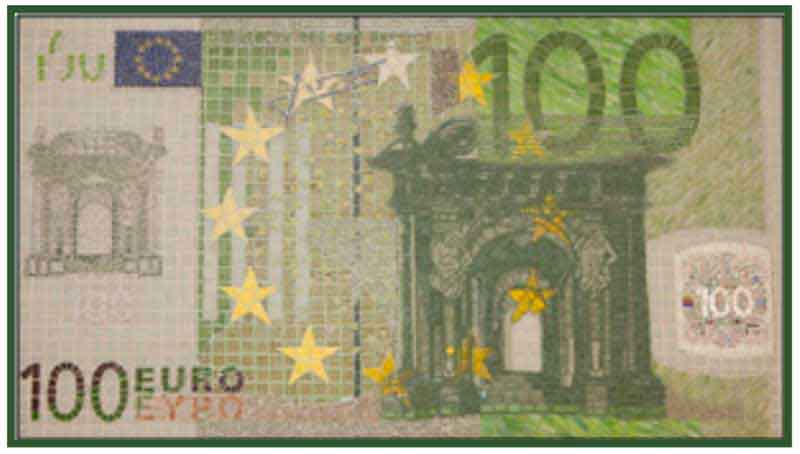
Numismatics also plays a role in providing income to central banks and in educating the public. Fiji’s recent new banknote series and numismatic program is a good recent example: 132
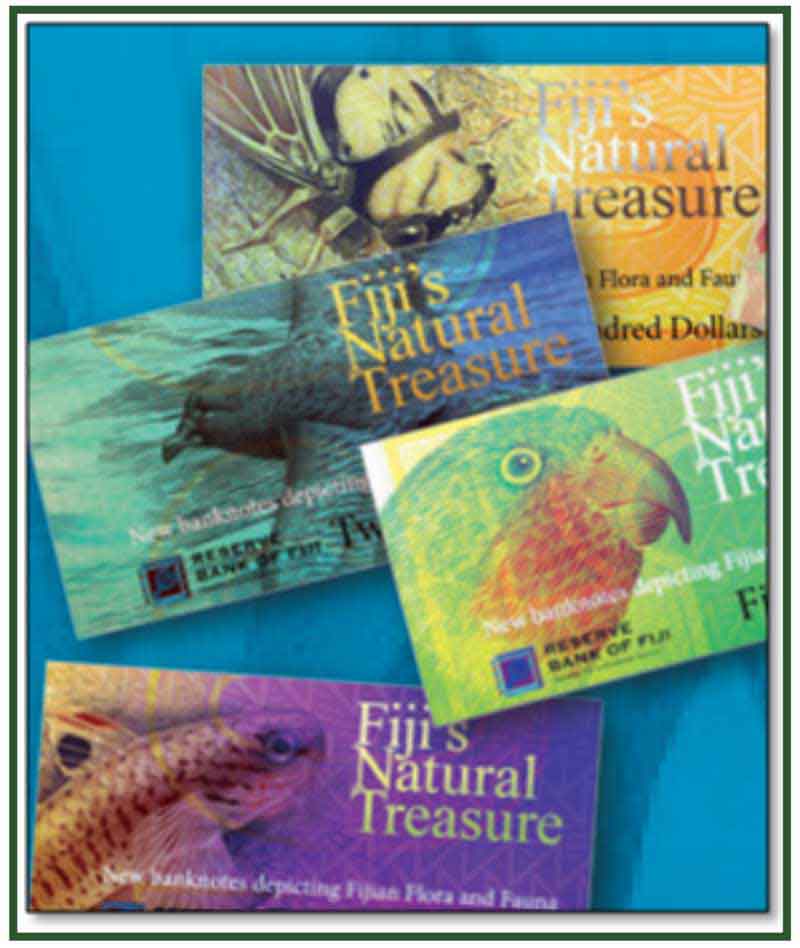
SICPA, the Swiss experts in security inks, comments on the significance of banknotes beyond their utility as currency:
The winning entry in Sweden’s 2011 currency design competition is the new “Cultural Journey” series to be released in 2016: 134
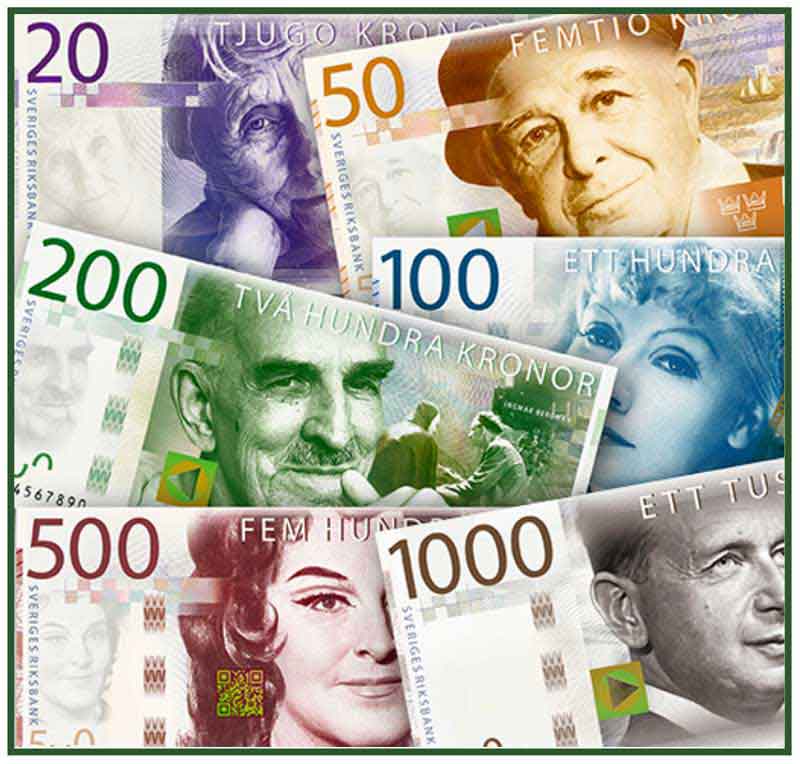
History, art, social issues, and culture combine in the Bank of England’s Jane Austen banknote, also to be issued in 2016: 135
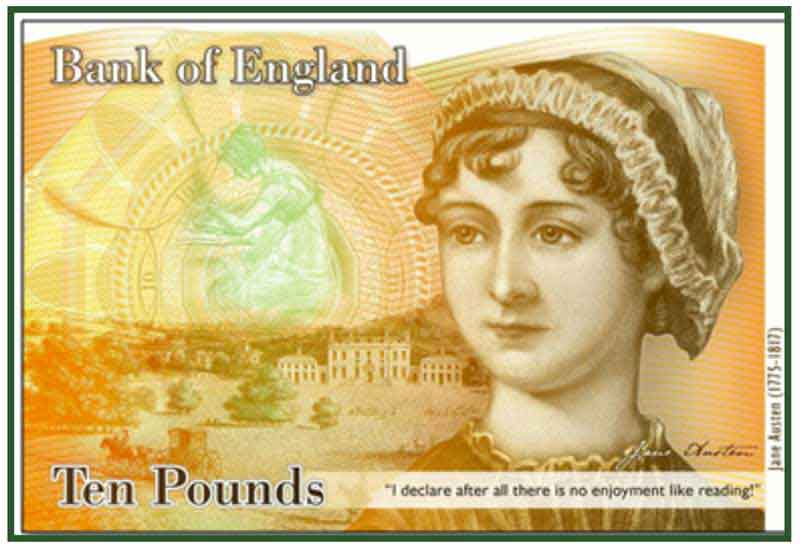
Like banknotes, coins too act as iconic national symbols and are used to educate the public on everything from notable individuals to indigenous flora and fauna, as with this coin from the Royal Canadian Mint:
For generations, physical money in the form of banknotes and coins has been used to teach children both the value of money and how to manage or save money. Whether the money is earned at a first job or is allowance money saved to a “piggy bank,” banknotes and coins continue to serve a societal role in educating children in a way that cannot be replicated by non-tangible forms of payment.
The continued and valuable role of banknotes and coins in teaching money management concepts to children is manifested in the Money Savvy Generation’s new award-winning “piggy bank for the 21st century”: 137
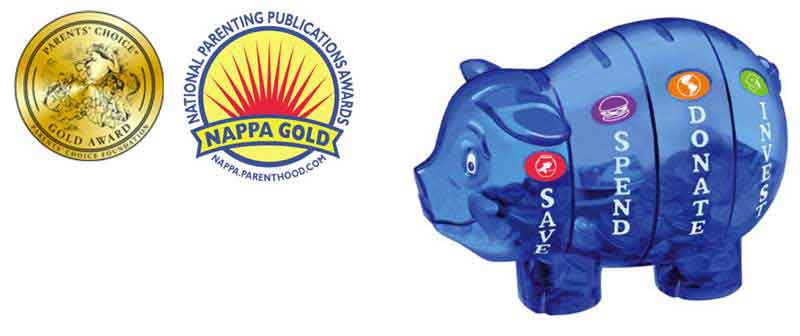
The rationale behind the Money Savvy Pig is described below:
Parents’ Choice Children’s Media and Toy Reviews lauded the combined educational and entertainment value of the Money Savvy Pig and called it “the educational toy of the year”:
Charitable giving is another societal benefit of cash. The UK Payments Council’s “Pay Your Way” campaign, which provides impartial information on the speed, cost, reliability, and security of different payment methods, describes cash as the payment method “most commonly used for everyday purchases” as well as donations:
It is telling that while some airlines no longer accept on-board cash payments from passengers, many still provide collection envelopes for leftover foreign currency that is then donated to charity. As an example, the UNICEF Change for Good program has generated more than $120 million USD from the passengers of eleven international airlines. 141
Charitable donations have also been successfully generated from customers who select a donation option while withdrawing cash from ATMs:
Lastly, cash recently stoked public debate about important social issues when a group of twenty plaintiffs stirred controversy and sued, unsuccessfully, the US Treasury for continuing to print “In God We Trust” on currency. 143 A recent Facebook post encouraged people to enter the debate, attracting almost 1.5 million “likes” and more than 50,000 comments: 144

From an unseen tax to a work of art, from an educational tool to a preferred method of payment for charitable giving, and even acting as a catalyst for the discussion of important social issues, cash is much more than just a payment method. It is and remains an emotion, as well as a means of constructing a national identity and a vehicle for expressing national pride.
Nigeria recently announced a pilot program of dual identity/payment cards issued in conjunction with MasterCard. 145 Outsourcing a large-scale government program, complete with the personal data of millions of people, to a foreign commercial supplier for the supplier’s commercial benefit could end up being deeply problematic. Currency Research suspects Nigeria does not want to be nationally identified with MasterCard, yet this could be a probable outcome.
On the other hand, banknotes and coins represent positive national attributes such as strength, trust, unity, and passion; why else would authorities move so quickly to adopt Russian currency only days after announcing the referendum results in the Crimea?
This article has been posted with permission from Currency Research and is excerpted from The Case for Cash Part 1: Myths Dispelled. To request a copy of the full report or to learn more about Currency Research, please click here.
126 http://www.investopedia.com/terms/s/seigniorage.asp
127 http://en.wikipedia.org/wiki/Seigniorage
128 http://ideas.repec.org/p/pra/mprapa/34778.html
129 https://www.usmint.gov/downloads/about/annual_report/2012AnnualReport.pdf
130 http://www.bankofcanada.ca/wp-content/uploads/2010/11/seigniorage.pdf
131 http://www.brainpickings.org/index.php/2010/04/27/the-art-of-money/
132 http://www.reservebank.gov.fj/docs2/Newspaper%20Supplement.pdf
133 http://www.sicpa.com/security-inks/banknote-art
134 http://www.riksbank.se/en/Notes-and-coins/New-notes-and-coins1/
135 http://www.bankofengland.co.uk/banknotes/Pages/characters/austen.aspx
136 http://www.mint.ca/store/coin/coloured-coin-waterlily-and-leopard-frog-2014-prod1920068#.U0WQNMfKwvI
137 http://www.msgen.com/
138 http://www.msgen.com/assembled/money_savvy_pig.html#.U2ktU61dV2A
139 http://www.parents-choice.org/product.cfm?product_id=10467&award=xx
140 http://www.payyourway.org.uk/faqs/guides/guide-to-charitable-giving/
141 http://www.unicefusa.org/supporters/organizations/businesses/partners/aa/change-good
142 http://www.payyourway.org.uk/faqs/guides/guide-to-charitable-giving/
143 http://nation.foxnews.com/god/2013/03/15/atheists-sue-treasury-over-god-we-trust-currency
144 https://www.facebook.com/photo.php?fbid=690248051035327&set=a.401034789956656.90394.389658314427637&type=1
145 http://online.wsj.com/article/BT-CO-20130508-713308.html
Seigniorage is the most obvious and quantifiable societal benefit of cash. Investopedia and Wikipedia define seigniorage as a tax or revenue that enables a government to finance a portion of its expenditures. This revenue represents an economic profit in the billions of dollars, pounds, euros, rupees, rubles, etc., which would need to be replaced by increased taxes should it decline. Coins usually represent 100% seigniorage accrual, as they are not returned to the state.
Investopedia explains seigniorage as follows:
Definition of ‘Seigniorage’
The difference between the value of money and the cost to produce it - in other words, the economic cost of producing a currency within a given economy or country. If the seigniorage is positive, then the government will make an economic profit; a negative seigniorage will result in an economic loss.
Investopedia explains ‘Seigniorage’
Seigniorage may be counted as revenue for a government when the money that is created is worth more than it costs to produce it. This revenue is often used by governments to finance a portion of their expenditures without having to collect taxes. If, for example, it costs the U.S. government $0.05 to produce a $1 bill, the seigniorage is $0.95, or the difference between the two amounts. 126
Wikipedia defines seigniorage similarly:
Seigniorage (seInjerId3/, also spelled seignorage or seigneurage) is the difference between the value of money and the cost to produce and distribute it. The term can be applied in the following ways:
• Seigniorage derived from specie—metal coins—is a tax, added to the total price of a coin (metal content and production costs), that a customer of the mint had to pay to the mint, and that was sent to the sovereign of the political area.
• Seigniorage derived from notes is more indirect, being the difference between interest earned on securities acquired in exchange for bank notes and the costs of producing and distributing those notes. 127
Seigniorage is a convenient and significant source of revenue for governments that, if removed, would need to be replaced by another tax. In the US and Canada, seigniorage earnings have totaled hundreds of billions and hundreds of millions of dollars for each country respectively. Over the last 46 years, cumulative seigniorage earnings in the US have amounted to $916 billion, of which $287 billion has been accrued to US taxpayers:
The newly revised official estimates of overseas currency holdings are employed to determine the Federal Reserve’s seigniorage earnings from 1964-2010, which have provided a $287 billion windfall for U.S. taxpayers. 128
The seigniorage of the circulating coin also reflects the coin’s value. The US Mint’s 2012 Annual Report cited the generation of a positive seigniorage in its circulating program: 129
CIRCULATING SEIGNIORAGE IN FY 2012 WAS $105.9 MILLION
In 2013, the Bank of Canada reported seignoriage earnings of $1 to $2 billion annually:
Seigniorage varies according to prevailing interest rates and the value of notes outstanding, but has ranged from $1.4 to $2.0 billion annually over recent years. After deducting the Bank’s general operating expenses of about $446 million (of which spending on bank notes is approximately 48 per cent), the remainder is paid to the Receiver General for Canada. 130
Furthermore, banknotes and coins benefit society by educating citizens about events or figures of national importance, or by highlighting social issues such as gender equality. Cultural events, architectural designs, geography, and nature have all served as themes of banknote series that have been used to inform and educate.
Due to their aesthetic qualities, banknotes are often considered as not only currency, but also works of art themselves. Moreover, banknotes are often used to create art. 131
Banknotes have also been the subject of artistic works, including the Mosaic Collective’s €100 note in mosaics, presented at the 2013 Currency Conference in Athens.

Numismatics also plays a role in providing income to central banks and in educating the public. Fiji’s recent new banknote series and numismatic program is a good recent example: 132

SICPA, the Swiss experts in security inks, comments on the significance of banknotes beyond their utility as currency:
Each banknote design tells a story about a precious heritage of its country. Banknotes convey nationalidentity and values inherent to their nations. Conceived by talented artists and skillful printers, banknotes can be considered an elegant expression of creative artistry.
Most of us handle banknotes in a habitually discreet manner during our daily transactions, yet it is worth taking a closer look into the intricate banknote microcosm, and pondering on the fine details and beauty of these familiar wonders. 133
The winning entry in Sweden’s 2011 currency design competition is the new “Cultural Journey” series to be released in 2016: 134

History, art, social issues, and culture combine in the Bank of England’s Jane Austen banknote, also to be issued in 2016: 135

Like banknotes, coins too act as iconic national symbols and are used to educate the public on everything from notable individuals to indigenous flora and fauna, as with this coin from the Royal Canadian Mint:
Found in [each] Canadian province and Territory except Yukon and Nunavut, the leopard frog is aptly named for the irregularly shaped black spots that dot its brown, greenish-brown, or green skin. It lives in a variety of habitats including wetlands in prairies and woodlands in summer for feeding. In the fall it usually moves to ponds, streams, and rivers which do not freeze to the bottom. In the spring it emerges to seek out ponds and marshes for breeding. It is there that the tadpoles will develop. 136
For generations, physical money in the form of banknotes and coins has been used to teach children both the value of money and how to manage or save money. Whether the money is earned at a first job or is allowance money saved to a “piggy bank,” banknotes and coins continue to serve a societal role in educating children in a way that cannot be replicated by non-tangible forms of payment.
The continued and valuable role of banknotes and coins in teaching money management concepts to children is manifested in the Money Savvy Generation’s new award-winning “piggy bank for the 21st century”: 137

The rationale behind the Money Savvy Pig is described below:
One slot piggy banks have been around for ... centuries. But the world has changed. Now we have a highly sophisticated financial system, a system whose complexity has outstripped the ability of most adults, many of whom grapple with credit card debt, even bankruptcy.
Personal finance education needs to start young. How? With the same universally loved childhood toy, the piggy bank ... but with a 21st century twist! The Money Savvy Pig piggy bank has four chambers, one for each of the four money management choices a child should be taught from the time they are small. They are SAVE, SPEND, DONATE, and INVEST. 138
Parents’ Choice Children’s Media and Toy Reviews lauded the combined educational and entertainment value of the Money Savvy Pig and called it “the educational toy of the year”:
At first glance, The Money Savvy Pig may not appear to be, per se, a “toy”. But don’t be deceived. This product is original, educational, and morally commendable. And yes, it inspires creativity. It provides kids with the tools and the opportunity to see how dollars are spent. Perhaps this simple piggy bank is the key that will close the door on greed, and open others to thinking about consequences, planning ahead, and pondering generosity at times other than traditional holiday giving... Be it in turbulent economic times or not, we believe this may be the educational toy of the year. 139
Charitable giving is another societal benefit of cash. The UK Payments Council’s “Pay Your Way” campaign, which provides impartial information on the speed, cost, reliability, and security of different payment methods, describes cash as the payment method “most commonly used for everyday purchases” as well as donations:
WAYS TO DONATE
Cash is the most popular way to donate with two thirds of people giving money in this way and more than 80% of charities accepting cash donations.
Whether you are dropping money in a collection tin or saving your coppers to donate to a big disaster appeal at a bank branch or post office, the benefits are obvious. You can decide when to give, give as much or as little as you like and there’s no further commitment. 140
It is telling that while some airlines no longer accept on-board cash payments from passengers, many still provide collection envelopes for leftover foreign currency that is then donated to charity. As an example, the UNICEF Change for Good program has generated more than $120 million USD from the passengers of eleven international airlines. 141
Charitable donations have also been successfully generated from customers who select a donation option while withdrawing cash from ATMs:
HSBC have already been running a scheme allowing their customers to donate when using an HSBC cash machine – more than £300,000 was donated in this way in 2010. 142
Lastly, cash recently stoked public debate about important social issues when a group of twenty plaintiffs stirred controversy and sued, unsuccessfully, the US Treasury for continuing to print “In God We Trust” on currency. 143 A recent Facebook post encouraged people to enter the debate, attracting almost 1.5 million “likes” and more than 50,000 comments: 144

From an unseen tax to a work of art, from an educational tool to a preferred method of payment for charitable giving, and even acting as a catalyst for the discussion of important social issues, cash is much more than just a payment method. It is and remains an emotion, as well as a means of constructing a national identity and a vehicle for expressing national pride.
Nigeria recently announced a pilot program of dual identity/payment cards issued in conjunction with MasterCard. 145 Outsourcing a large-scale government program, complete with the personal data of millions of people, to a foreign commercial supplier for the supplier’s commercial benefit could end up being deeply problematic. Currency Research suspects Nigeria does not want to be nationally identified with MasterCard, yet this could be a probable outcome.
On the other hand, banknotes and coins represent positive national attributes such as strength, trust, unity, and passion; why else would authorities move so quickly to adopt Russian currency only days after announcing the referendum results in the Crimea?
This article has been posted with permission from Currency Research and is excerpted from The Case for Cash Part 1: Myths Dispelled. To request a copy of the full report or to learn more about Currency Research, please click here.
126 http://www.investopedia.com/terms/s/seigniorage.asp
127 http://en.wikipedia.org/wiki/Seigniorage
128 http://ideas.repec.org/p/pra/mprapa/34778.html
129 https://www.usmint.gov/downloads/about/annual_report/2012AnnualReport.pdf
130 http://www.bankofcanada.ca/wp-content/uploads/2010/11/seigniorage.pdf
131 http://www.brainpickings.org/index.php/2010/04/27/the-art-of-money/
132 http://www.reservebank.gov.fj/docs2/Newspaper%20Supplement.pdf
133 http://www.sicpa.com/security-inks/banknote-art
134 http://www.riksbank.se/en/Notes-and-coins/New-notes-and-coins1/
135 http://www.bankofengland.co.uk/banknotes/Pages/characters/austen.aspx
136 http://www.mint.ca/store/coin/coloured-coin-waterlily-and-leopard-frog-2014-prod1920068#.U0WQNMfKwvI
137 http://www.msgen.com/
138 http://www.msgen.com/assembled/money_savvy_pig.html#.U2ktU61dV2A
139 http://www.parents-choice.org/product.cfm?product_id=10467&award=xx
140 http://www.payyourway.org.uk/faqs/guides/guide-to-charitable-giving/
141 http://www.unicefusa.org/supporters/organizations/businesses/partners/aa/change-good
142 http://www.payyourway.org.uk/faqs/guides/guide-to-charitable-giving/
143 http://nation.foxnews.com/god/2013/03/15/atheists-sue-treasury-over-god-we-trust-currency
144 https://www.facebook.com/photo.php?fbid=690248051035327&set=a.401034789956656.90394.389658314427637&type=1
145 http://online.wsj.com/article/BT-CO-20130508-713308.html
Additional Resources from ATM Industry Association
- 4/23/2024 - ATMIA Unveils Strategic Collaboration with Reconnaissance International to Elevate Intelligence & Networking Services to the ATM & Currency Industries
- 4/21/2024 - Fight Against Cashless Economy:
- 4/18/2024 - 3 myths about accepting cash at self service
- 4/18/2024 - Upcoming ATMIA/ASA Committee Meetings: April and May 2024
- 4/18/2024 - ATMIA Joins Atlanta Fed Meeting on Best Practices for ATM Cash Replenishment
- Show All ATM Industry Association Press Releases / Blog Posts



























